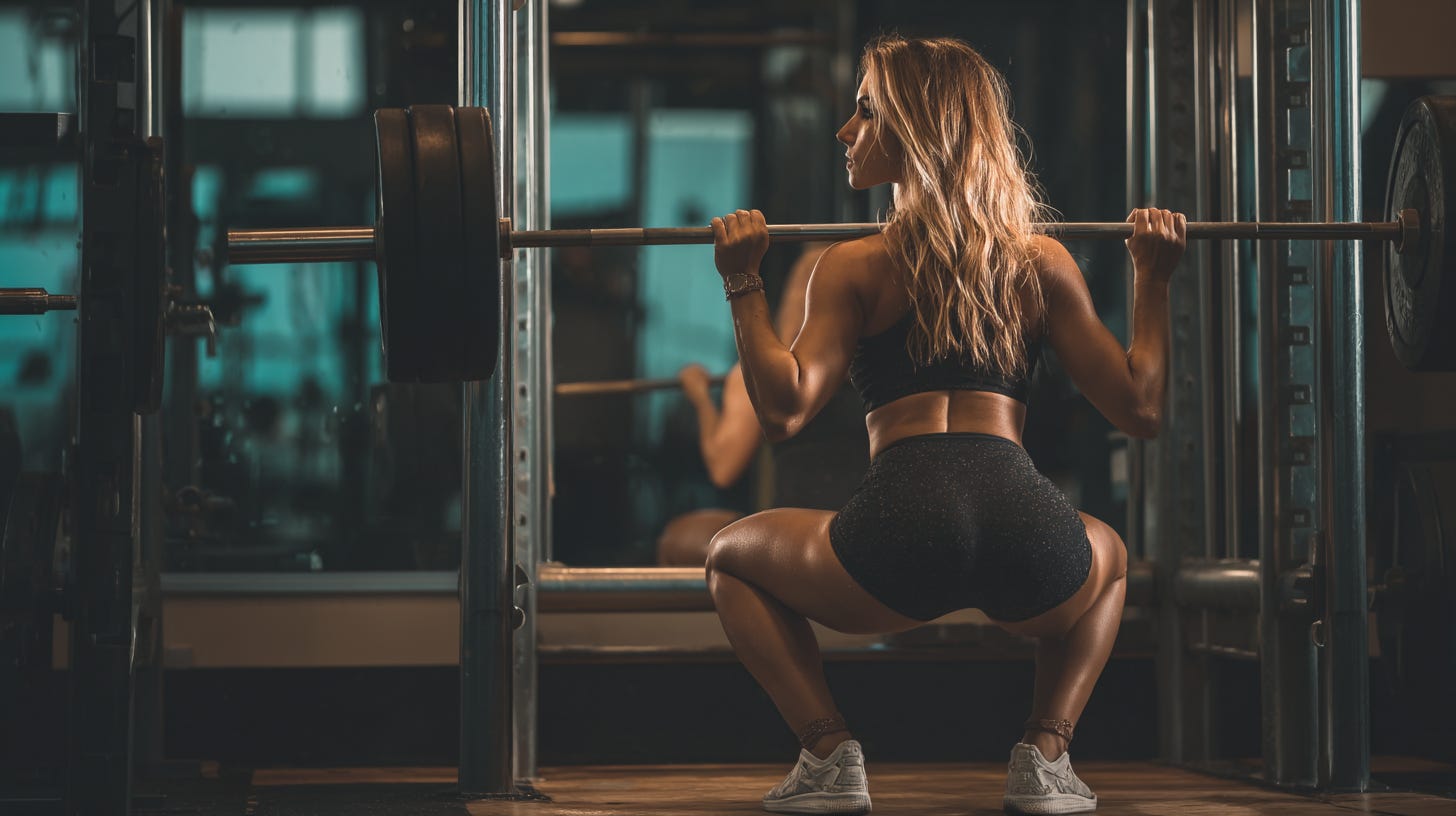Muscles Working Across Different Squat Loads
Effects of increasing squat intensity conditions in elite powerlifters.
The study investigated how muscle forces change as squat intensity increases in elite powerlifters, aiming to inform biomechanically sound coaching strategies for the sport of powerlifting.
PMID: 40275729
Key Points
Aims
The study focuses on elite powerlifters performing squats at 70%, 75%, 80%, 85%, and 90% of their one-repetition maximum (1RM).
It aims to quantify how muscle forces, especially in hip and knee extensors, adapt to increasing squat loads.
Understanding these muscle force dynamics is crucial for optimizing squat technique and training to improve performance and reduce injury risk.
Methods
Twenty-nine elite Austrian powerlifters (average age ~26 years, 1-RM about 2.4 times body mass) performed squats at the specified intensities.
Muscle forces were estimated using force plates and 3D motion capture data was analyzed through musculoskeletal modeling software (OpenSim).
The study examined changes in forces in key muscles: gluteus maximus, semitendinosus (hamstrings), vastii (quadriceps), and calf muscles.
Results
Muscle forces significantly increased with squat intensity, particularly in the gluteus maximus and semitendinosus, which showed the greatest relative increase.
The vastii muscles produced the highest absolute muscle forces across all intensities.
Interestingly, during the "sticking region" of the squat (the most challenging part), forces in hamstrings, calf, and vastii muscles barely increased despite higher loads.
No correlation was found between an athlete's performance level and the ratio of single-joint to multijoint hip extensor muscle forces.
The study highlights a shift in load distribution from the knee to the hip joint as intensity increases, with the hip extensors playing a dominant role at higher loads.
Knee extensor muscle forces plateau, suggesting they may be a limiting factor, while hip extensors have untapped capacity.
Practical Takeaways
Focus on or allow for hip-dominant squatting techniques (emphasizing sitting back and minimizing forward knee travel) when training or competing at high intensities.
Supplementary training targeting knee extensors (quadriceps) is important to address their relative force plateau and improve overall squat performance.
Developing hip extensor strength can unlock greater load capacity, as these muscles bear increasing loads at higher intensities.
Technique ingrained at lighter loads should emphasize hip dominance to prepare for heavier lifts.
Coaches should tailor squat techniques and training programs to the individual's strength profile, especially balancing hip and knee extensor capabilities.
Related
Summary
Experienced lifters and coaches will already know this; heavier loads recruit more muscles. As loads increase ‘‘allowing’’ a little horizontal translation of the pelvis puts the body in a position to handle the most weight.
Keeping a strictly upright torso as with back and front squats will greatly limit total RM loads while emphasising the quadriceps to a greater extent. Which you might do if building the quadriceps is a priority over simply getting stronger.
Neither of these approaches or techniques is wrong, they just lead to slightly different outcomes. They’re options.
This study provides biomechanical evidence that as squat intensity increases in elite powerlifters, the hip extensors (gluteus maximus and hamstrings) take on a greater relative load, while knee extensor forces plateau. This suggests a natural compensation strategy where the body shifts load to the hip joint, which has more reserve capacity. For optimal performance and injury risk reduction, lifters should adopt or allow for a hip-dominant squat technique and strengthen both hip and knee extensors accordingly.
In essence, the hip joint becomes the primary load-bearing structure at high squat intensities, underscoring the importance of hip-focused training and technique refinement in elite powerlifting.
Reference
Pürzel A, Kaufmann P, Koller W, Pöhlmann L, Baca A, Kainz H. Muscle Force Dynamics Across Increasing Squat Intensity Conditions in Elite Powerlifters. Scand J Med Sci Sports. 2025 May;35(5):e70058. doi: 10.1111/sms.70058. PMID: 40275729.
You can also find me at dannyleejames.com for more personal stories, training advice and coaching.










